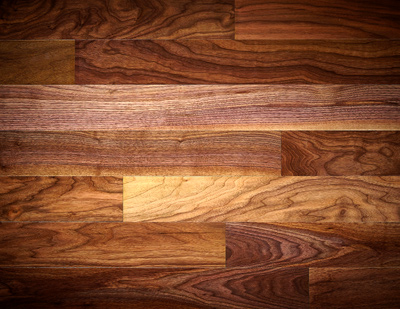Wouldn’t it be nice if hardwood floors were as durable as they look? Sadly, they do not stand up nicely to dragged appliances, dropped heavy objects, and marking shoes. You don’t want any damage done to your gorgeous floors in your new home, and you also do not want any unfortunate flooring disasters to take place at your current home that you may have to pay for immediately. If you want to know how to protect hardwood floors when moving, you should find the moving tips in this hardwood flooring protection guide to be very helpful.
Doormats
You are probably thinking that doormats are not really going to be very effective at protecting hardwood floors when moving, but they will help more than you know. When the mover (or anyone helping) is walking through dew-covered grass or a dirt driveway tracking it in on the bottom of their shoes, they create a slippery and dangerous condition. You do not want anyone to slip and fall, especially if they are carrying a heavy table, appliance, or anything else that could do some damage hitting the ground with a little force.
Rugs and Runners
Create a “walkway” starting from the door and traveling through the house. Make sure that there is a route to every room. The biggest problem with rugs is that they move, especially on a slick surface. So, it is important to make sure there are no wrinkles in the rugs or tripping hazards. Nonstick backing can help, or most runners already have the nonslip surface. If you will be using a dolly the importance of creating a very smooth path can’t be stressed enough. If the dolly hits a bump it could spell disaster for your floors.
Furniture Sliders
You probably have seen furniture sliders advertised on infomercials late at night. You may have even thought to yourself that those handy gadgets would offer great hardwood flooring protection. These sliders also make it easier on you or whoever is hauling heavy items.
To use them, you have to lift the corner of the object you are moving and slip one underneath. Repeat this until all areas touching the floor have a cover on them. Then, you should be able to slide the pieces of furniture where they need to go. These really come in handy for super heavy and bulky objects, such as armoires, chests, sofas, etc.
Cardboard and Alternatives
Cardboard is often a go-to option because it is convenient. You have extra boxes lying around that you do not need, so creating a cardboard path seems like the logical thing to do. In some cases, it can be helpful, but it is often a big mistake.
Cardboard slides around easily, and the last thing you want to do is tape it to the floors. Of course, with it being so abrasive, you don’t want it sliding either. Plus, if it is wet the print on the box can end up transferred to the floor. So, cardboard is okay for a quick fix, like sliding it under a heavy appliance that needs to be set down, but other than that it is not really a great solution.
Red rosin paper is a much better option to use if you are wondering how to protect hardwood floors. It is 100 percent recycled paper typically used for flooring and siding purposes. It reduces moisture and some of this paper even has a polyurethane coating, which makes it resistant to tearing and moisture. You can usually pick it up at Home Depot or wherever building supplies are sold. You can also buy it online at many retailers, including Amazon, Uline, Zaro, and Sears.
Ram Board
Ram board is another great alternative to cardboard. It can be pricey, but damage to your floors will be a lot more expensive. This heavy-duty contractor-grade product is usually made of recycled materials and it can be reused several times. So, when you get around to that kitchen remodel you plan on doing, you will already have this handy. Contractors drag toolboxes and materials over ram board without a second thought, knowing it provides maximum protection.
Addressing Scratches
These tips explaining how to protect hardwood floors when moving should hopefully help you get through the day without your floor taking a lot of abuse. However, sometimes, scratches still happen despite everyone taking precautions and being as careful as possible.
If the scratch is down to the bare wood, you can fill it in using a stain that matches your floor color. Blending pencils and stain markers can also be quite helpful. Always wipe the excess away promptly before it has a chance to dry.
For deeper gouges use pre-colored latex wood floor filler that matches your floors. Apply it using a plastic putty knife and once dry, level the surface using fine-grit sandpaper. Finish with a coat of varnish.
Now that the floors have been protected and repaired, utilize these 5 handy tips after you move in.
Here’s How to Protect Hardwood Floors When Moving:
- Cover your floors with cardboard or red rosin paper
- Ram board is another great alternative to cardboard
- Use doormats, rugs, and runners over the floors
- Use furniture sliders
- Fill any scratches in using a stain that matches your floor color
Stay in the know with ALL our FlatRate moving tips and have our movers protect your hardwood floors during your next move. If you’re still unsure about going with carpeting or hardwood flooring, check out our guide today!
